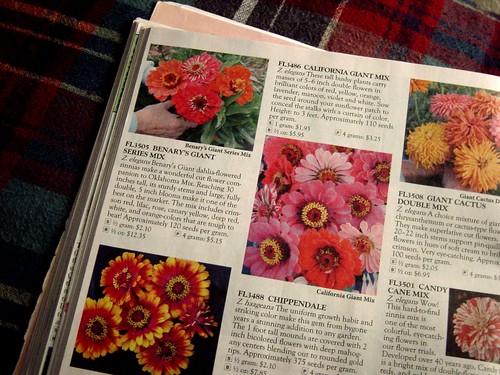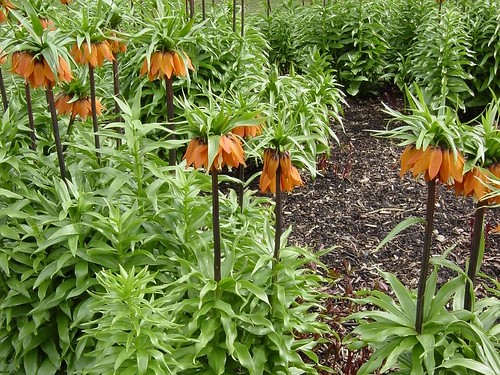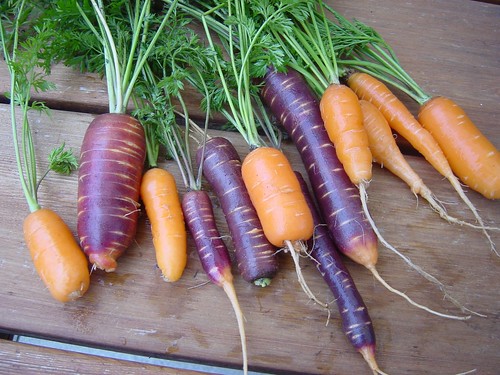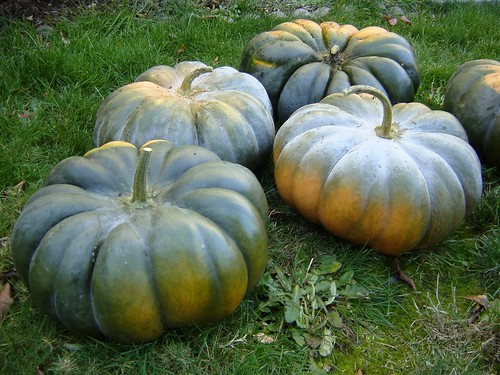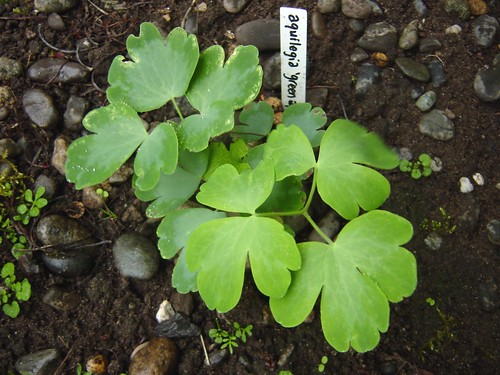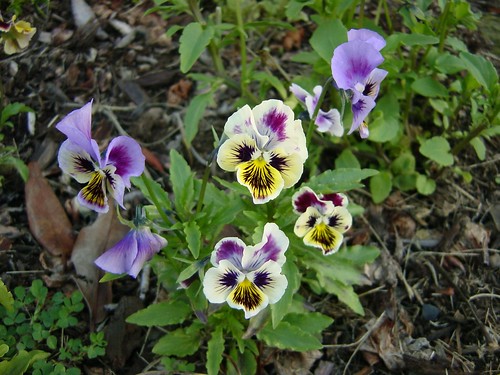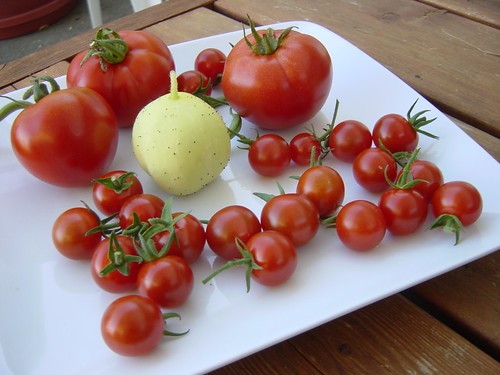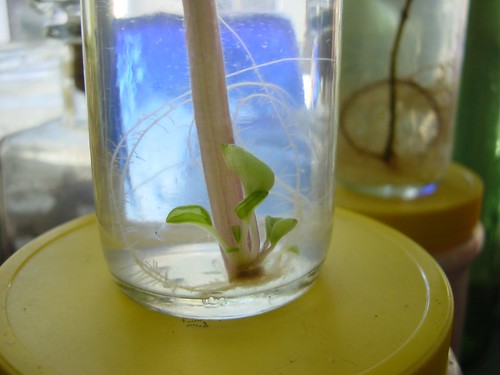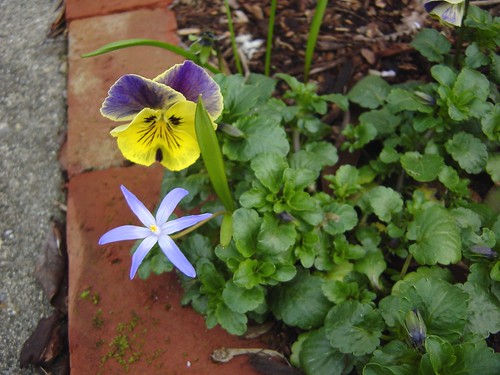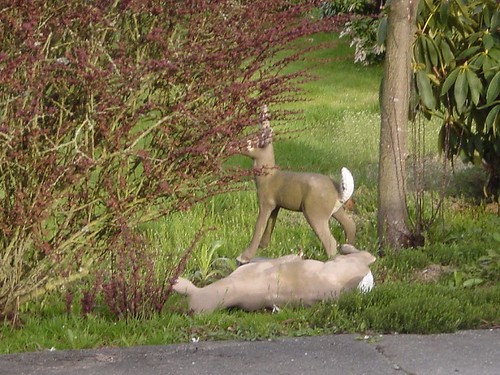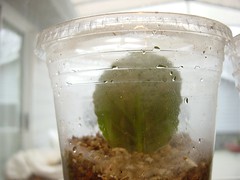It's time for that post I've been threatening you with! So here they are: the tomatoes I grew this year, and what I thought of them...
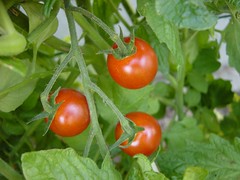 Supersweet 100:
Supersweet 100: This is a common, popular, hybrid variety of cherry tomato. They're almost candy-like in their sweetness-- I'm not a big fan of cherry tomatoes, but these were worth eating straight off the vine. They were great in salads (including insalata caprese), but my favorite way of preparing them was to saute them whole, which seemed to bring out even more flavor and sweetness. I popped a few in the dehydrator whole, and the skins prevented them from drying, but the heat cooked the insides... next time, I'll halve them before drying, but the resulting moist, shriveled fruit were delicious.
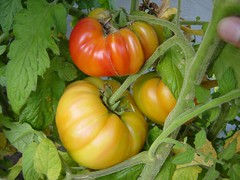 Pineapple:
Pineapple: This yellow tomato was another sweet one-- not sugary, like the Supersweets, but mild and hardly acidic. I never got around to eating one while it was yellow-- after sitting on the counter for a day or two, they all ripened to a striped red-yellow color, both inside and out. The fruit were beautiful when sliced. These tomatoes were very large-- one of them easily made two generous (and yummy) tomato sandwiches. I'd definitely classify them as fresh-eating tomatoes.
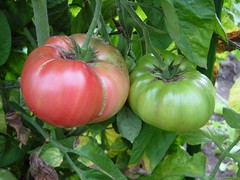 Brandywine:
Brandywine: I haven't tasted this year's crop yet. The first couple that ripened went to friends, and only two more have ripened this past week. From past experience, I can say that these tomatoes are very flavorful-- like no other tomato I've had before, with a rich, deep taste that I can imagine someone comparing to wine. The fruit are as large, or larger, than Pineapple-- one on my counter is six inches in diameter across the top. While I know from previous years that Brandywine is great for tomato sandwiches, I'll be saving this year's crop for pasta sauces and tomato soup.
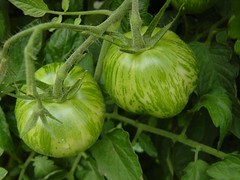 Green Zebra:
Green Zebra: These green tomatoes are kind of infamous in the tomato world. Some people love them, others hate them. Personally, I rather like them. Their tomato flavor is mild and depthless, in contrast to that of the Brandywines, but they have a nice balance of tart acidity, flavor, and sweetness. I grew them mostly to serve fresh in caprese salads, but as the season comes to a close, I think I might use some of them for a green tomato chutney as an experiment.
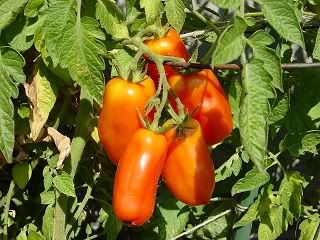 San Marzano:
San Marzano: You may recognize this photo from last year-- I haven't uploaded any from this year's crop, which is growing in my compost pile. The tomatoes coming from those volunteer plants are variable in size and quality, although they all have the trademark elongated, hollow fruit. These are considered paste tomatoes-- there is very little, if any, of the gelatinous, seedy goop that you find at the center of most tomatoes. I like them for that fact alone, and almost prefer them over "salad" tomatoes for salads, paste-tomato status notwithstanding. They are good raw. They are great for sauces. They dry beautifully. I will be growing them in earnest next year.
Early Girl (not pictured): I grew my Early Girls from seed this year. What can I say about them? The fruit are evenly-shaped, of respectable size (up to 3" across), and bountiful. They are the first in the garden to ripen, aside from the cherry tomatoes. The taste is better than that of a hothouse tomato. The flesh is compact and slices neatly. I like Early Girls, but they don't have much bling. On the other hand, they easily make up most of my harvest. There will always been room for at least one of them in the garden.
Principe Borghese (not pictured): These are small, dense paste tomatoes, and I'm kind of ambivalent about them. I can't stand them for fresh eating, although the other members of the household swear that they're "okay" fresh. To me, they taste like paste starch. The yield was disappointing-- IIRC, this is the only determinate variety I grew this year, and none of the plants got very large or pumped out many fruit. On the other hand, they seem to cook well, dissolving smoothly to a nice thick consistency, which is what a paste tomato ought to do. And they're very neat and pretty when halved and dried, and seem to lose the paste-like flavor.
So there you have it! I can tell you for certain that I'll be growing at least one Early Girl, one Pineapple, a couple of San Marzanos, and a Brandywine next year, and I'm looking forward to trying 'Persimmon,' as well. But since the garden will support up to twelve plants (without using the compost pile :-P), I'd love to hear suggestions for other varieties that I should try!

